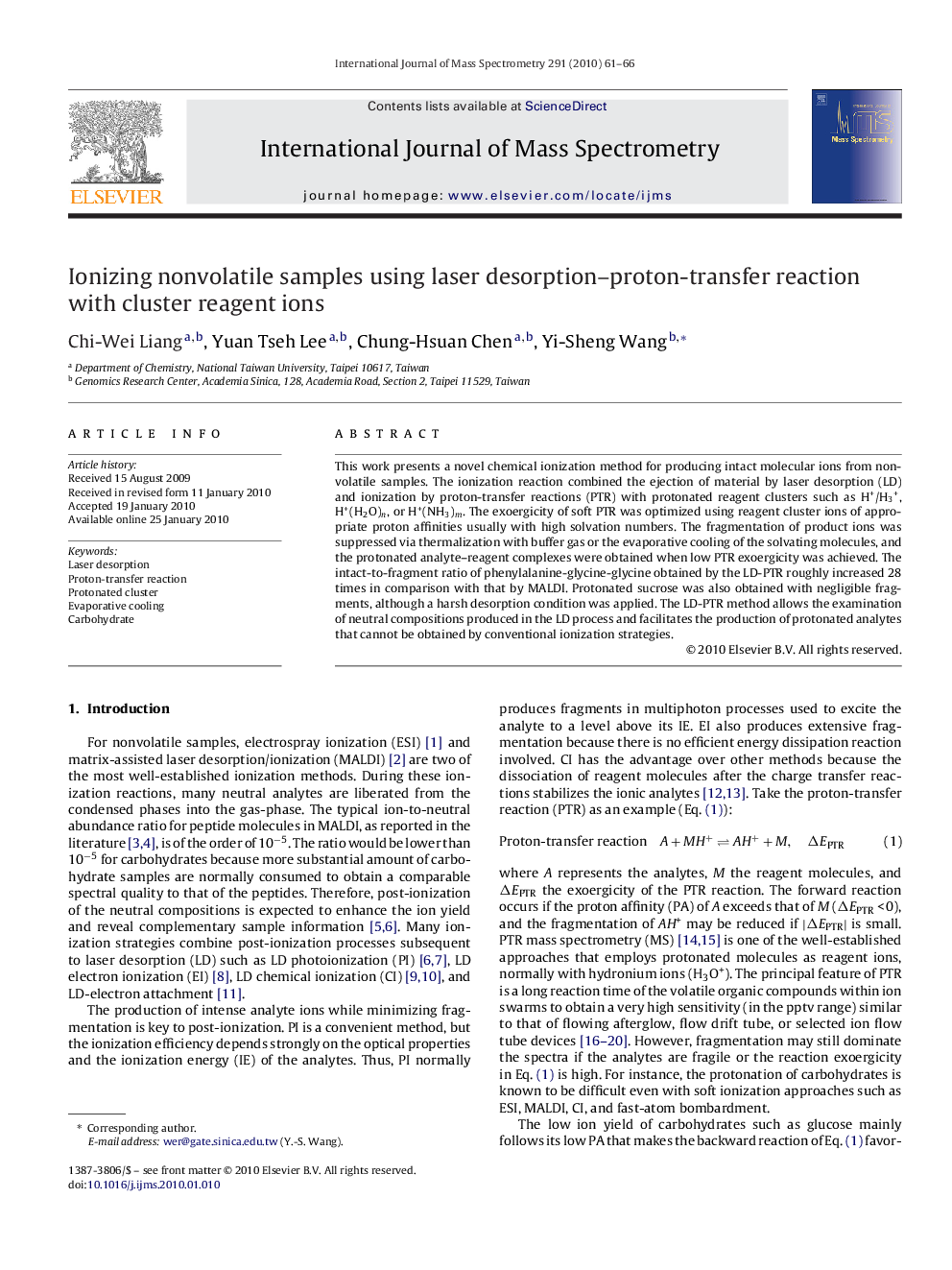| Article ID | Journal | Published Year | Pages | File Type |
|---|---|---|---|---|
| 1192403 | International Journal of Mass Spectrometry | 2010 | 6 Pages |
This work presents a novel chemical ionization method for producing intact molecular ions from nonvolatile samples. The ionization reaction combined the ejection of material by laser desorption (LD) and ionization by proton-transfer reactions (PTR) with protonated reagent clusters such as H+/H3+, H+(H2O)n, or H+(NH3)m. The exoergicity of soft PTR was optimized using reagent cluster ions of appropriate proton affinities usually with high solvation numbers. The fragmentation of product ions was suppressed via thermalization with buffer gas or the evaporative cooling of the solvating molecules, and the protonated analyte–reagent complexes were obtained when low PTR exoergicity was achieved. The intact-to-fragment ratio of phenylalanine-glycine-glycine obtained by the LD-PTR roughly increased 28 times in comparison with that by MALDI. Protonated sucrose was also obtained with negligible fragments, although a harsh desorption condition was applied. The LD-PTR method allows the examination of neutral compositions produced in the LD process and facilitates the production of protonated analytes that cannot be obtained by conventional ionization strategies.
Graphical abstractA soft ionization reaction is demonstrated to produce protonated intact biomolecules by combining laser desorption and proton-transfer reaction with protonated reagent clusters.Figure optionsDownload full-size imageDownload high-quality image (237 K)Download as PowerPoint slide
